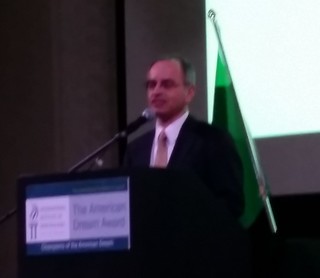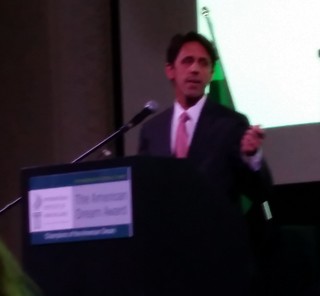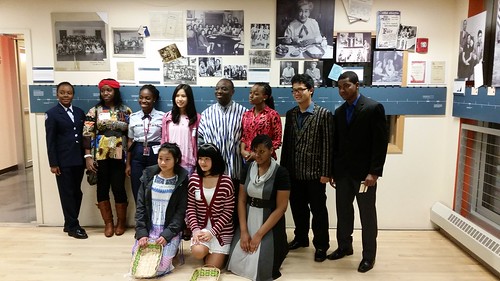Lowell Week in Review: December 14, 2014
City Council – Bike Lanes
The city council’s transportation subcommittee met last Tuesday before the regular council meeting. Their topic was the bike lanes on Fr. Morissette Boulevard. They recommended some changes to the markings around the lanes – nothing that seemed too drastic – but the biggest thing to come out of that meeting was the presentation of a YouTube video produced earlier this year by the Boston Police Department. The 14-minute video explains the laws that control the intersection of automobiles, bicycles and pedestrians. I learned a lot and it seemed like the councilors did too. If you haven’t already done so, please watch the video which can be found HERE.
City Council – Upper Merrimack Street
One motion that didn’t get much attention but touched on an important topic was by Bill Samaras who asked for a report on the city’s plans for upper Merrimack Street, the stretch from the City Hall up to University Crossing at Pawtucket Street.
As one of our regular blog readers pointed out in a comment to my notes about the city council meeting, Jeff Speck’s “Evolution Plan” already has a prescription for that area. Here’s the comment left by Brian:
Jeff Speck already put together a good plan for Upper Merrimack St. to ignite development. It involves creating cross streets between Merrimack and Moody. As of now the block is too long between Colburn Street (the library) and Cabot Street. Long blocks aren’t useful for mobility, become undesirable, and induce blight. Dr An Wang isn’t walking through the door to save Lowell and we can’t over rely on UML. Why council members aren’t referring to Speck’s report on a weekly basis dumbfounds me.
Brian amplifies Speck’s observation that two of the smaller streets that once connected Merrimack to Moody have been blocked off by some projects during the past 50 years. They advocate reopening those streets since “short blocks” are conducive to more pedestrian traffic and street life. Below is a screen print of the area from the 1924 city atlas.

[I concur with Brian’s admonition to councilors to frequently look to the Speck Plan and add my own: Look to the city’s master plan, Sustainable Lowell 2025. It’s a great document that provides a blueprint for how Lowell should move forward during the next decade. Here it is December and having watched almost every council meeting held during 2014, I’m not sure I can recall a single instance of a councilor citing the city’s own master plan in a debate on any issue].
In his remarks on the motion, Samaras specifically mentioned the former Jeanne d’Arc Credit Union parcel at the corner of Merrimack and Cabot which is now vacant and has great potential for development. Also mentioned was the Smith Baker Center which anchors one end of this corridor. A few months ago Mayor Elliot established a committee to investigate ways in which the Smith Baker Center might be rehabilitated and returned to service as a performing arts venue and – something else. I understand that the committee has already met. Hopefully we’ll hear a positive response from the soon.
City Council – Divestment
Another issue raised at the council was divestment. Rita Mercier had filed a motion that the city divest from any fossil fuel companies as a way of speeding our transition to sustainable energy sources. Several members of the local environmental group, 350MA of Greater Lowell, spoke in favor of the motion but the council voted to refer the motion to the City Manager for a report on whether the city has any such investments. This was at the behest of City Councilor Bill Martin who stated his philosophical and practical opposition to such motions coming before the council. Since the council has no real power on this issue, he argued, taking up such issues invites others with similar issues to use the council as a forum to publicize their concerns which might tend to squeeze out more pressing city issues from council meetings.
My own thinking is that citizens should have the right to ask their elected officials to go on record on issues that matter to them. In this past year, there has been plenty of debate on the council floor on issues that were only tangentially related to the regular business of the city council. I don’t think 350MA of Lowell is going away so the council will have to vote yes or no on this issue eventually.
American Dream Awards
The International Institute of Lowell held its American Dream Award ceremony Thursday night at UTEC. A crowd of more than 200 honored Luis Pedroso, this year’s recipient. Pedroso, who is the President and CEO of Accutronics, Inc., was also a client of the International Institute when he came to America from the Azores as an 8-year old.

Luis Pedroso accepting American Dream Award
In his remarks accepting the award, Pedroso explained that when he came here as a boy in 1974, his family reached out to the International Institute for help. He called the International Institute “a beacon of hope for new immigrants, then and now.” He said he is proud to have been adopted by Lowell. He knows that some who were born here call those who move here from elsewhere “blow ins” but Pedroso said he “doesn’t feel that way” because he has tremendous gratitude for Lowell and for what the city did for his family. That’s what motivates him to give back. He said “if we are to be relevant, we have to contribute.”
Pedroso closed by stressing the importance of education. He said that low skill jobs continue to disappear and young people need a good education to get a good job otherwise they’ll be left behind. He said his company has several smart, energetic employees but because they are deficient in their reading, writing and math skills, they can’t be promoted to jobs they have otherwise earned.
Pedroso then accepted the American Dream Award in the name of all immigrants here in Lowell and all across America. “They deserve to be honored and recognized,” he concluded.
In his remarks honoring Mr. Pedroso, UMass Lowell Chancellor Marty Meehan stressed that immigrants contribute billions of dollars more to the US economy than they receive in government benefits. He said that immigrants “feed the fire of the American Dream.” He also reminded everyone that the founding documents of the Lowell National Historical Park gave it a twin mission: to study and commemorate the ingenuity and innovation of the Industrial Revolution in American [which is the strand that gets most of the attention] AND to celebrate the culture of the immigrants who came here to provide the work force of the Industrial Revolution because the culture of those ethnic people still exists here in Lowell today [the strand of the National Park that should get a lot more attention].
A special guest introduced Mr. Pedroso. He was David Simas, a second generation American and native of Taunton, Massachusetts who is now a senior advisor to President Barack Obama at the White House. Simas explained that his parents came to Taunton from Portugal in 1969 “with few possessions but with an abundance of dreams.” He said that “America is built on the aspirations of these heroes who leave behind everything they have and everything they know to come to a strange and different place to make a better life for them and their families.” Simas commended the International Institute as a “bridge for frightened and confused new comers” who are “lifted up by the Institute so that they can work to fulfill their dreams.”

White House adviser David Simas
Simas said the Luis Pedroso “personifies what it means to be an American” and urged us to “remember the power of immigration: it joins us all together as generation after generation of new comers refresh the United States every day.” Simas ended by saying “There are few places in the country that so personify the American Dream as does Lowell, Massachusetts.” [Many in the crowd afterward commented about the power and passion of Simas’s remarks. I’m not sure what he plans to do when he leaves the White House, but if he returns to Massachusetts to run for office, sign me up as a supporter].
Simas’s observation about us all being joined through the generations really hit home with me later that evening when I was speaking with one of the International Institute’s high school-aged volunteers. This young man’s name was Muhammad and he had come to Lowell and America from Somalia in 2012. I asked him where he lived. “Willie Street,” he answered. It turns out he lives just a few doors down from the home in which my great grandfather, James Howe, lived when he came here from Ireland in the 1890s.

International Institute volunteers
So congratulations to the International Institute for all it does and has done for the immigrants of Lowell. And thanks for pointing out all of the good that comes from this steady flow of immigrants into our community. It’s a message that should be repeated loudly and often for all to hear.
Western Avenue – Always something new
Yesterday I stopped at Western Avenue Studios to do some Christmas shopping. It seems every time I visit that place another section of that old mill building has been renovated and filled with new artists. Today I saw many old friends and made some new ones. These included Sergio and Kerri who met as students at UMass Lowell back in the 1990s and have made Lowell their home even though neither is from here. He’s a photographer and she’s a printer. Their studio at Western Ave is dominated by a vintage printing press that they bought on the internet and retrieved from its Kansas City home in a rental truck. They’re both entrepreneurs who are working hard to grow their respective businesses. Theirs is a great story that seems to typify Lowell in the 21st century.

Kerri of “1933 letterpress” with here printing press
Sergio & Kerri are definitely the very best of Lowell!